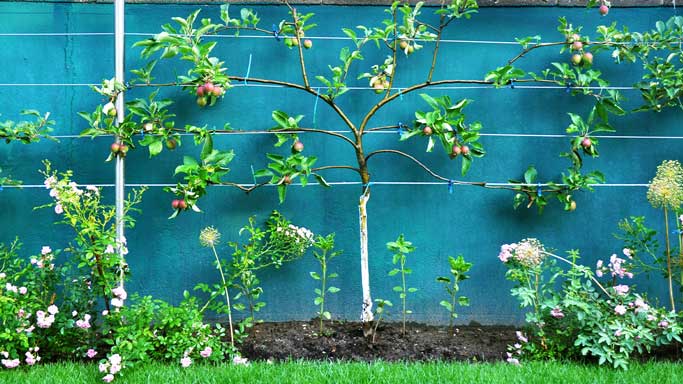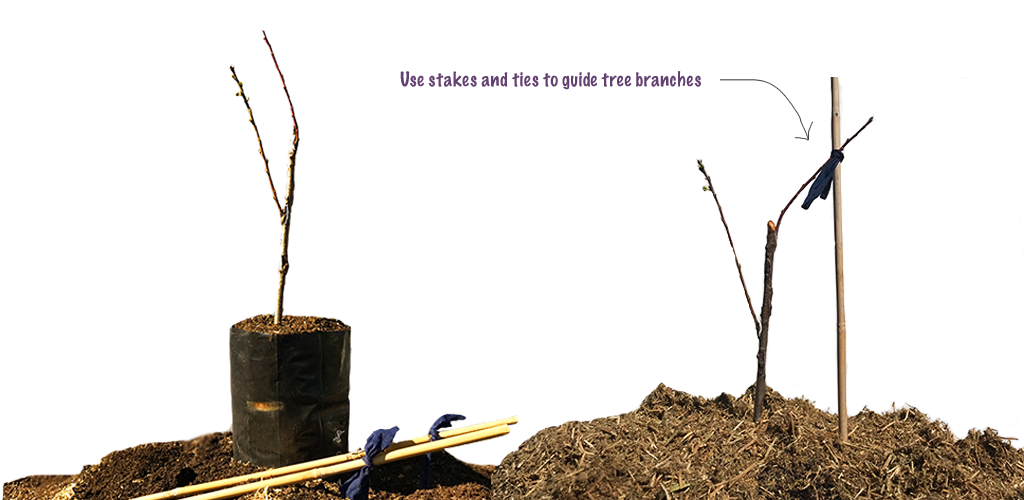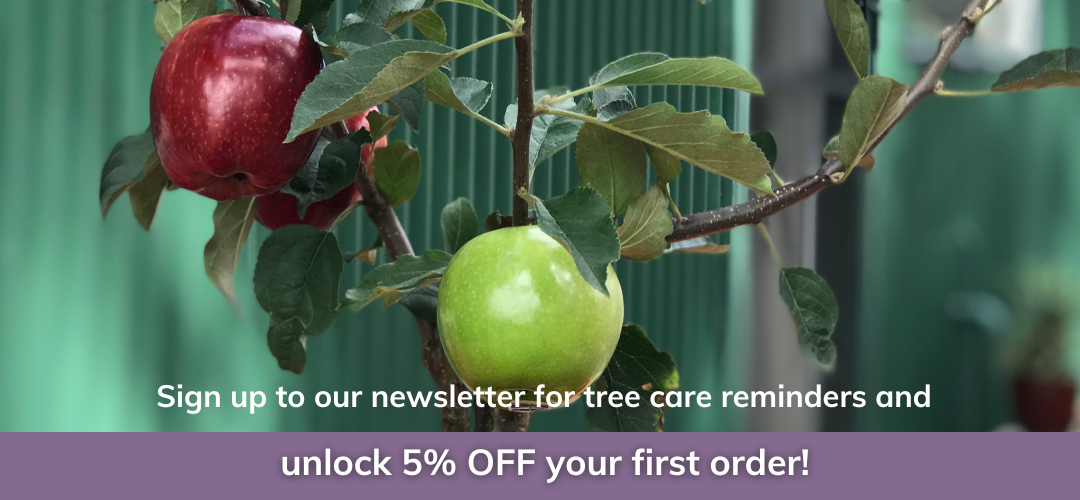Yes you can plant your Fruit Salad Tree in a pot! Great for Balconies and Patio areas, or for people who want to be able to move the tree around, or even move house! Growing your tree in a pot will also reduce the size of the tree to about two thirds the size the tree would grow in the ground. We recommend starting with a 12 inch pot and potting up each year. As a guide, in the second year, you would repot into an 18 inch pot or similar. You can also plant you tree directly into a large pot i.e. half wine barrel size or larger, if you don't want to pot up every year. Make sure you feed your tree at least 4 times a year to keep it growing well.
Fruit Salad Trees can be planted in pots at any time of the year. Terracotta pots look great but can lose water, read more about sealing them here.
Plant your tree late in the day when the weather is cooler if you have the option.
Quarter fill a bucket and pour over the tree to wet the roots, and then remove from the bag by cutting it with a knife.
Knock off about half of the existing soil and tease the roots out.
Place in the centre of your pot ensuring the tree is pointing straight up.
Fill with potting mix leaving a 2-3cm gap.
Add a layer of fertilizer but make sure it doesn't touch the stem of the tree so that it doesn't rot the trunk.
Sprinkle with a slow release fertiliser
Water to settle the soil
Add a thick layer of mulch to hold the moisture
Lastly, keep a tray under the pot to catch excess nutritious water so that your tree can reabsorb.
It's best to replace with a larger pot each year as the tree grows so that you'll end up with a large pot which is a similar to half of a wine barrel in size. You can keep the same pot size, however, note that the size of the tree and the amount of normal size fruit will be determined by the size of the pot.









